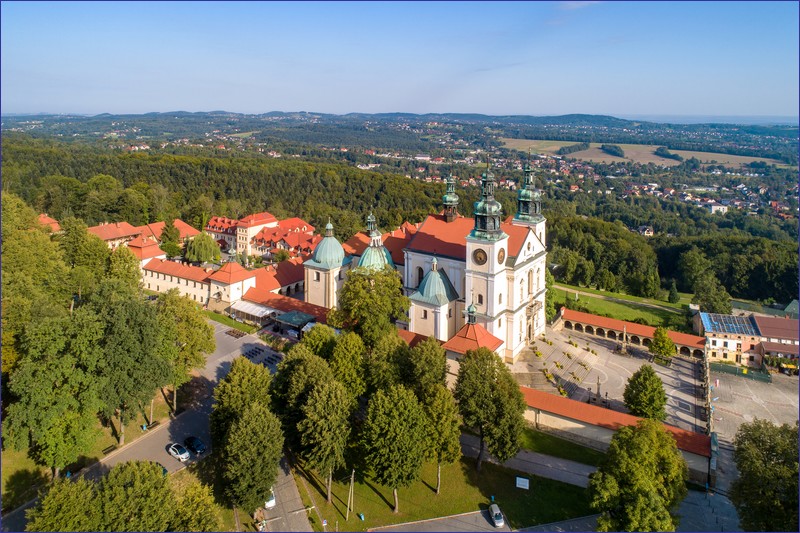Krakow is a city with beautiful Old Town, many monuments and museums. Krakow is also a perfect starting point to explore Lesser Poland voivodeship and adjacent regions. The city is very well connected with important tourist sites – by train or by bus. There are numerous international trains from Krakow. In this article you can find tips for one-day train trips from Krakow by regional trains.
In recent years, rail transport has rapidly grown in popularity. Railway lines and stations have been renovated, and trains run faster and more frequently. Regional trains, especially in rush hours, are overcrowded. Sometimes is better to take an expensive fast trains operated by PKP Intercity.
In this article, I’ve included the most important ones that can be reached by regional trains within two hours, counting from the first to the last station within the borders of Krakow and the destination. Passengers traveling on long-distance trains can plan a one-day train trip from Kraków to many other interesting Polish cities, such as Warsaw, Wroclaw, Lublin, Lodz, Rzeszów, or Przemyśl.
Direction Wieliczka
Wieliczka – thanks to a very good rail connection, taking the train from Krakow to Wieliczka (as long as there are no disruptions due to track work) is the best way to reach the world-famous Wieliczka Salt Mine. The two renovated train stations in Wieliczka are also impressive. While strolling through the center of Wieliczka, one can admire preserved headframes (e.g., the Regis Shaft); on the main square, there’s a now-faded 3D mural depicting miners at work. Also noteworthy are the town’s religious monuments – the richly decorated 19th-century Church of St. Clement and the wooden Church of St. Sebastian from 1582. Near the salt mine, there is a lovely park and a graduation tower.
One-day train trips from Krakow – direction Tarnów
Staniątki (optional) – A visit to the Benedictine Abbey complex, founded in 1238, is worth considering. Of particular note is the oldest hall church in Poland. Shells from World War I shelling remain embedded in its walls. Several times a year, parts of the monastery that are usually closed to the public are opened for visitors. In recent years, conservation and renovation work has been carried out.
Bochnia (optional) – The railway station, built between 1904 and 1908, stands on the site of a smaller 19th-century station. The town center, a 10-minute walk from the station, can be explored in about an hour — highlights include the revitalized (though now mostly paved over) main square and the Basilica of St. Nicholas from 1440, which took its present form after a renovation in 1905. More time can be spent at the Regional Museum, located in a historic building by the square (featuring collections of handicrafts, sculpture, non-European cultures, and the history of Bochnia), and at the Bochnia Salt Mine — lesser known than Wieliczka’s, but still famous far beyond the town. Highlights for tourists in the mine include a boat crossing through a brine-flooded chamber, a ride on a mining train, and a 140-meter slide connecting two levels of the mine.
From Bochnia, it’s worth taking a bus to Nowy Wiśnicz and Lipnica Murowana. In Nowy Wiśnicz, be sure to visit the 14th-century castle, extensively rebuilt over the centuries, once the seat of the Kmita and later the Lubomirski families, as well as the Museum of the Wiśnicz Region. Lipnica Murowana is famous for its market square and the wooden Church of St. Leonard, a UNESCO World Heritage Site.
Tarnów – A very interesting city with a rich history. It’s a great spot for a few hours’ walk, a weekend stay, or as a base for rail, bus, or cycling trips in the area. The historic train station is a landmark itself; a 10-minute walk away are the cathedral and one of the most beautiful town squares in the region, featuring a central town hall. Nearby are the wooden Church of Our Lady of Mount Carmel and the Old Cemetery with ornate tombstones. Of the synagogue destroyed by the Nazis, only the bimah (Torah reading platform) remains. Along the pedestrian Wałowa Street, you’ll find a beautiful mural depicting a fragment of the Panorama of Transylvania — the painting’s fascinating story is featured in many guidebooks. A walk through Strzelecki Park and a visit to the District Museum and its branches are also recommended. The city is rich in monuments, memorials, historic cemeteries (including Jewish and military), murals, churches, attractive buildings, and unique features such as the Székely Gate — one of only three of its kind in Poland. Also deserving of a separate visit is the Mościce district, built in the late 1920s as a garden-city-style neighborhood for workers of the newly established nitrogen plant in Tarnów.
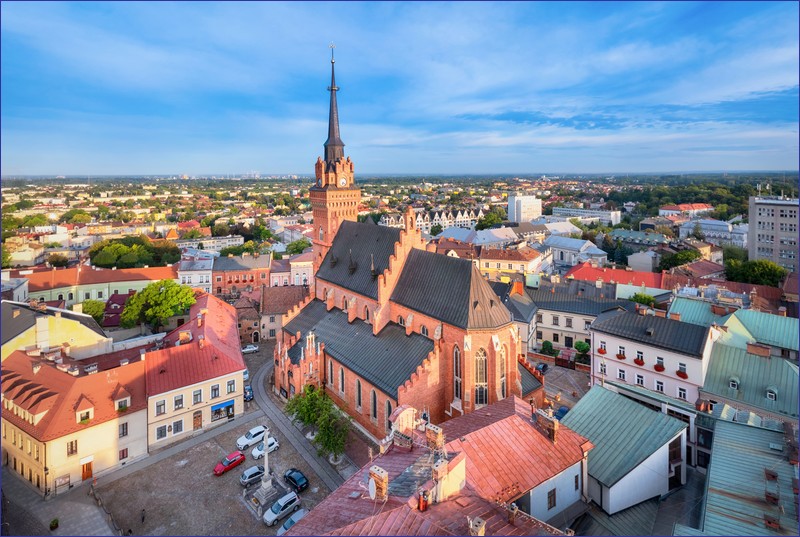
Direction Oświęcim
There are two train routes to Oświęcim. The first one is via Trzebinia (faster), the second one via Spytkowice and Zator (slower). If you travel via Zator, trains stop at the Zator Energylandia stop – close to the famous theme park (open seasonally).
Oświęcim – A town most closely associated with the Auschwitz-Birkenau Memorial and Museum. Visiting the former extermination camp requires several hours, but while in the area, it’s also worth seeing the nearby Museum of the Memory of the Inhabitants of the Oświęcim Region, which presents the history of local residents with a focus on World War II. Just 3 kilometers from the Auschwitz Memorial (and 1.5 km in the opposite direction from the train station) lies the town center, where the Castle Museum offers an engaging overview of the town’s history. From the observation tower, visitors can enjoy a panoramic view of Oświęcim. The Castle Museum also operates a branch in the Old Town Hall on the Main Square.
In the former synagogue, you can learn about the history of Oświęcim’s Jewish community, and a visit to the nearby Jewish cemetery, located about a kilometer away, is also possible. During the spring-to-autumn season, the Boulevards — a park along the Soła River running through the town — come to life with activity. Thanks to a well-developed and relatively affordable accommodation base, Oświęcim, once railway line renovations are completed, may also serve as an excellent base for train trips throughout the Małopolskie and Śląskie provinces.
Direction Katowice
Jaworzno Szczakowa (optional) – about 1.5 kilometers from the railway station lie scenic walking areas marketed by advertising agencies as the “Polish Maldives” — this is Gródek Park, one of the most striking tourist attractions in Poland (in my opinion one of the most overrated)
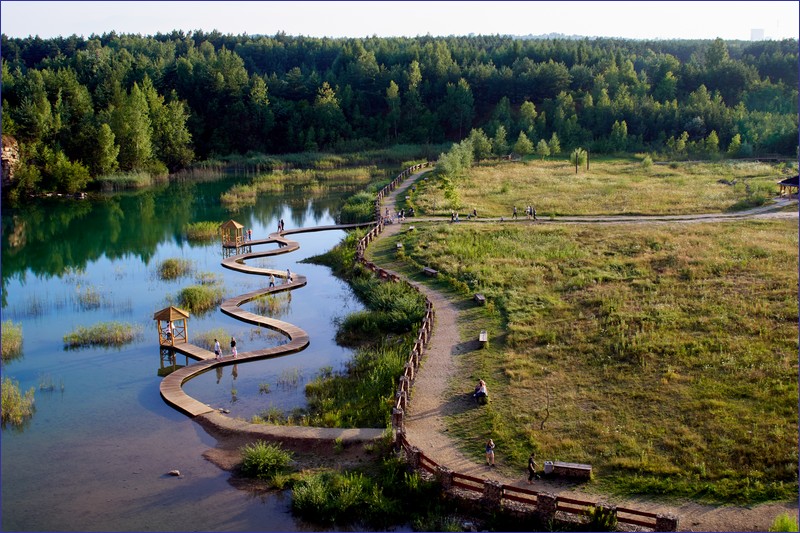
Mysłowice (optional) – a very neglected city with – one of the most dangerous cities in Poland. However, 1.5 kilometers from the train station, it’s worth visiting the Central Museum of Firefighting, which features a fascinating exhibition of fire trucks. Right next door is the Museum of the History of Mysłowice. The most interesting historic buildings in Mysłowice are located right next to the train station, near the tram terminus.
Katowice (optional) – the capital of the Silesian Voivodeship has undergone major transformation in recent decades. At first glance, it may seem like an unattractive city, but it hides many fascinating spots for curious travelers who enjoy discovering lesser-known landmarks. A typical visitor on a day trip should be sure to see the Silesian Museum, which offers a variety of thematic exhibitions about Upper Silesia, the Nikiszowiec district with its unique early 20th-century red-brick architecture, and, if time allows, Silesian Park.
The Silesian Museum is a 15-minute walk from the main train station, passing through the central square, the massive “Superjednostka” apartment block, and the iconic Spodek arena. Nikiszowiec is accessible by bus, while Silesian Park can be reached by tram.
Right next to the main station, there are also several noteworthy places: the Old Railway Station, Katowice’s first skyscraper known as Drapacz Chmur, the neglected Jewish cemetery, and the imposing Silesian Voivodeship Office building. Before taking a longer trip around the city, it’s worth learning about the history of Katowice and its various districts.
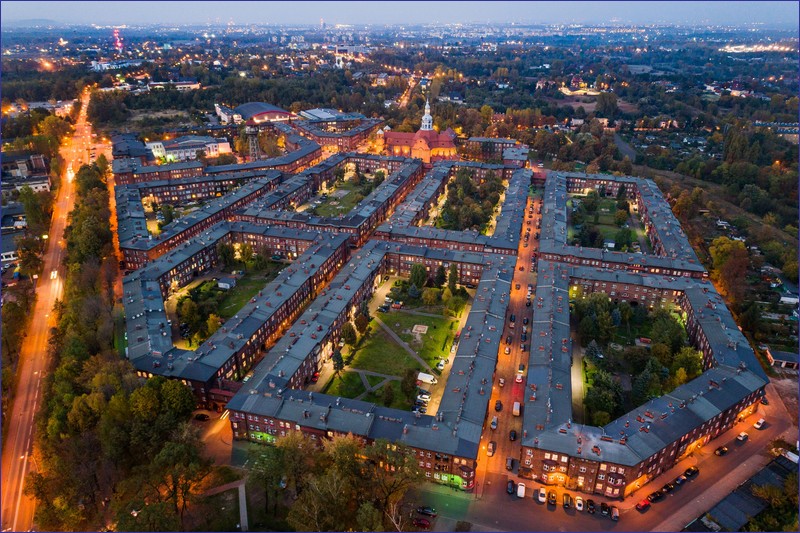
Direction Kielce
Jędrzejów (optional) – an interesting town. The railway station used to be larger and more attractive, but it was destroyed during World War II. Year-round, it’s worth visiting the Cistercian Abbey, the first established by the order in Poland; the Przypkowski Museum located in the town square, which features a large collection of sundials; and the Church of the Holy Trinity. In the summer season, the Świętokrzyska Narrow-Gauge Railway operates. At the time of writing, trains were running on the Jędrzejów–Jasionna section, but after track renovations, service will be extended to Pińczów.
Open-Air Museum in Tokarnia – one of the most interesting and highest-rated attractions in the Świętokrzyskie Voivodeship is the Kielce Countryside Museum in Tokarnia. The open-air museum is located about 3 kilometers from Wolica station, which is served by regional trains running between Krakow and Kielce.
Kielce – the capital of the Świętokrzyskie Voivodeship may appear bleak when seen from a train window — dominated by vast, endless blocks of flats. The most attractive part of the city center is the area around the Palace of the Bishops of Krakow and the Cathedral of the Assumption of the Blessed Virgin Mary. The palace now houses the National Museum, which features a gallery of paintings and other works of art.
Direction Wadowice
You can reach Wadowice by taking the Krakow–Bielsko-Biała trains (although service frequency leaves much to be desired), and Zator can be reached via Krakow–Oświęcim trains through Skawina (service to Oświęcim was resumed on December 10, 2023). Some of the places mentioned in this article are also served by Krakow–Zakopane trains.
Skawina (optional) – A moderately attractive town, but it’s worth stopping on the way to Tyniec Abbey (5 km on foot, or accessible by bus). The train station has been renovated, and there’s an interesting exhibition at the Regional Museum. The most notable buildings include the parish church dating back to the reign of Casimir the Great (in its current form since its 1826 reconstruction), the town hall, and the “Sokół” Gymnastic Society building.
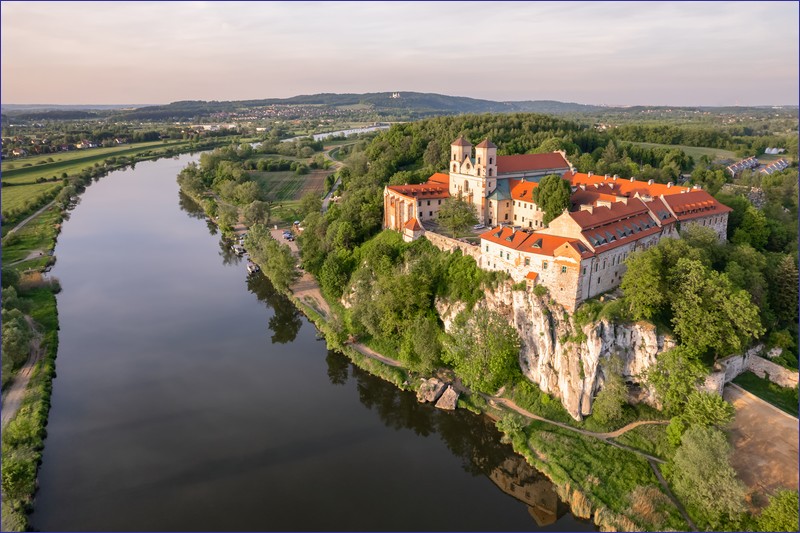
Kalwaria Zebrzydowska (optional) – A town known for its Passion and Marian Sanctuary, which features the largest Way of the Cross in Poland, established in the 17th century by Mikołaj Zebrzydowski. The trail includes 52 chapels, churches, shrines, statues, and bridges. Each year, pilgrims flock here to venerate the miraculous image of Our Lady of Kalwaria.
A few kilometers from Kalwaria Zebrzydowska and 5 km from the Kalwaria Zebrzydowska Lanckorona train station lies Lanckorona —a very popular village made famous in the media and on blogs thanks to its wooden-architecture market square. During the season and on weekends, expect crowds. Some visitors are enchanted; others feel it’s overhyped.
In nearby Stryszów (a station along the railway toward Sucha Beskidzka and Zakopane), museum enthusiasts should visit the late-18th-century manor house (remodeled mid-18th century). It’s considered one of the most interesting examples of historic residential architecture in Małopolska. The manor is a branch of the Wawel Royal Castle, with a permanent exhibit titled “Interiors of a Polish Manor in the 19th Century.”
Wadowice – A small town that’s very easy to explore, as the main attractions are located within a compact area, less than a 10-minute walk from the train station. Tourists come primarily to visit the Family Home Museum of John Paul II at 7 Kościelna Street, where Karol Wojtyła was born and grew up. You should also see the impressive basilica at John Paul II Square and the small, neighboring Municipal Museum run by the Wadowice Cultural Center, which presents the history and highlights of Wadowice and the Skawa Valley.
Related articles:
Train travel in Poland – a comprehensive guide
Scenic railways in Poland
Narrow-gauge railways in Poland
